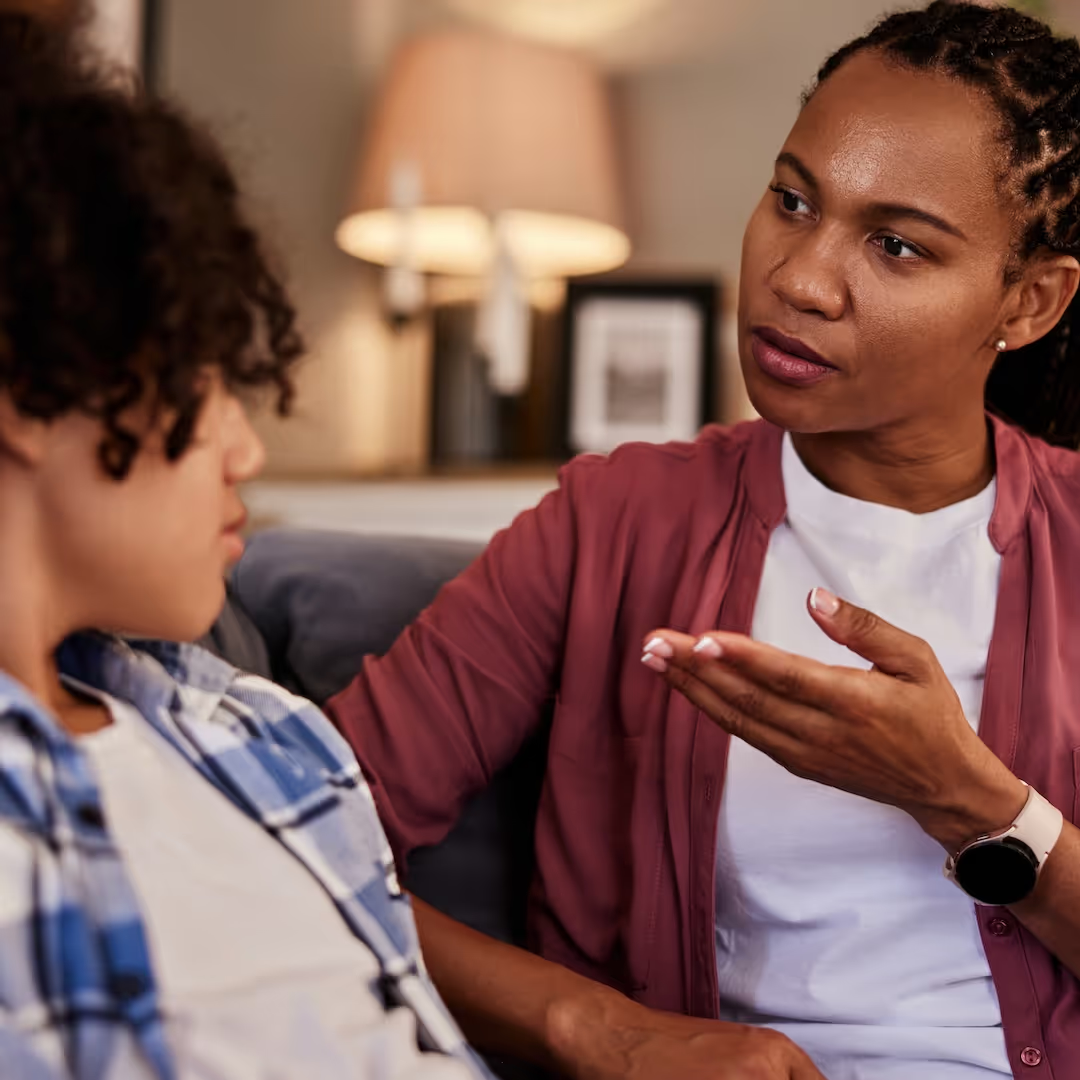


Shopping has never been easier. Half-off emails, super sale ads and "don’t miss" deals inundate our inboxes and social media feeds. This is a hard temptation to resist, especially if your self-control muscles are still developing like they are in our kids’ brains.
One of our team’s sons repeatedly bought skateboarding gear using his mom’s PayPal account. “It went on for a couple of months until we noticed what was going on,” she says. Another friend’s daughter racked up $200 worth of charges on Apple. “It wasn’t until we saw the credit card statement that we realized she was buying movies, games and in-app purchases. Luckily, Apple was very generous about reversing most of the charges.”
Of course, not all kids and teens are buying things online, but many spend lots of time browsing retail sites, such as clothing sites. Some days I see my 16-year old daughter toggling back and forth between clothing sites and her homework sites.
An important thing to talk with kids about is whether they can stop and recognize the urge to leave their studies and go to another tab—before they actually do that. And where is the urge stemming from? Is it surfacing from a homework problem that seems too hard? Or, might it come from a sense of anxiety because it's late in the evening and they feel pressure to finish so checking out a fashion site relieves the stress? Can they sit with the urge and not react but notice it passing on its own?
Here is a funny aside that relates to all this. Last weekend I was thinking about meditation and how on the one hand it seems so simple—it is all about focusing on the breath and not jumping on the train of passing thoughts. On the other hand, meditation is about changing the way our brains operate—the real goal of meditation is to see an urge and then not jump to act on the urge but to stop and decide how you want to respond. DO YOU KNOW HOW HARD THAT IS TO DO AGAIN AND AGAIN! Yep, we all do. It is all about the practice.
Learn more about showing our movies in your school or community!
Join Screenagers filmmaker Delaney Ruston MD for our latest Podcast

Learn more about our Screen-Free Sleep campaign at the website!
Our movie made for parents and educators of younger kids
Learn more about showing our movies in your school or community!
Learn more about showing our movies in your school or community!
Join Screenagers filmmaker Delaney Ruston MD for our latest Podcast

Learn more about our Screen-Free Sleep campaign at the website!
Our movie made for parents and educators of younger kids
Join Screenagers filmmaker Delaney Ruston MD for our latest Podcast
As we’re about to celebrate 10 years of Screenagers, we want to hear what’s been most helpful and what you’d like to see next.
Please click here to share your thoughts with us in our community survey. It only takes 5–10 minutes, and everyone who completes it will be entered to win one of five $50 Amazon vouchers.
Shopping has never been easier. Half-off emails, super sale ads and "don’t miss" deals inundate our inboxes and social media feeds. This is a hard temptation to resist, especially if your self-control muscles are still developing like they are in our kids’ brains.
One of our team’s sons repeatedly bought skateboarding gear using his mom’s PayPal account. “It went on for a couple of months until we noticed what was going on,” she says. Another friend’s daughter racked up $200 worth of charges on Apple. “It wasn’t until we saw the credit card statement that we realized she was buying movies, games and in-app purchases. Luckily, Apple was very generous about reversing most of the charges.”
Of course, not all kids and teens are buying things online, but many spend lots of time browsing retail sites, such as clothing sites. Some days I see my 16-year old daughter toggling back and forth between clothing sites and her homework sites.
An important thing to talk with kids about is whether they can stop and recognize the urge to leave their studies and go to another tab—before they actually do that. And where is the urge stemming from? Is it surfacing from a homework problem that seems too hard? Or, might it come from a sense of anxiety because it's late in the evening and they feel pressure to finish so checking out a fashion site relieves the stress? Can they sit with the urge and not react but notice it passing on its own?
Here is a funny aside that relates to all this. Last weekend I was thinking about meditation and how on the one hand it seems so simple—it is all about focusing on the breath and not jumping on the train of passing thoughts. On the other hand, meditation is about changing the way our brains operate—the real goal of meditation is to see an urge and then not jump to act on the urge but to stop and decide how you want to respond. DO YOU KNOW HOW HARD THAT IS TO DO AGAIN AND AGAIN! Yep, we all do. It is all about the practice.
Sign up here to receive the weekly Tech Talk Tuesdays newsletter from Screenagers filmmaker Delaney Ruston MD.
We respect your privacy.
Shopping has never been easier. Half-off emails, super sale ads and "don’t miss" deals inundate our inboxes and social media feeds. This is a hard temptation to resist, especially if your self-control muscles are still developing like they are in our kids’ brains.
One of our team’s sons repeatedly bought skateboarding gear using his mom’s PayPal account. “It went on for a couple of months until we noticed what was going on,” she says. Another friend’s daughter racked up $200 worth of charges on Apple. “It wasn’t until we saw the credit card statement that we realized she was buying movies, games and in-app purchases. Luckily, Apple was very generous about reversing most of the charges.”
Of course, not all kids and teens are buying things online, but many spend lots of time browsing retail sites, such as clothing sites. Some days I see my 16-year old daughter toggling back and forth between clothing sites and her homework sites.
An important thing to talk with kids about is whether they can stop and recognize the urge to leave their studies and go to another tab—before they actually do that. And where is the urge stemming from? Is it surfacing from a homework problem that seems too hard? Or, might it come from a sense of anxiety because it's late in the evening and they feel pressure to finish so checking out a fashion site relieves the stress? Can they sit with the urge and not react but notice it passing on its own?
Here is a funny aside that relates to all this. Last weekend I was thinking about meditation and how on the one hand it seems so simple—it is all about focusing on the breath and not jumping on the train of passing thoughts. On the other hand, meditation is about changing the way our brains operate—the real goal of meditation is to see an urge and then not jump to act on the urge but to stop and decide how you want to respond. DO YOU KNOW HOW HARD THAT IS TO DO AGAIN AND AGAIN! Yep, we all do. It is all about the practice.

So what is pornography, and how do we talk with our young people about this prickly topic? Every time I sit down to write about this, I feel a bit of sadness and, frankly, disbelief. It’s hard to accept that we’ve created a society where youth can be just a click away from all sorts of highly explicit sexual material. And yes, parental controls and blockers can help, but the internet is everywhere, and chances are, they will see things somewhere. But we have to talk about it.
READ MORE >
In today's blog I introduce and give a brief summary of my recent podcast conversation with Jo-Ann Finkelstein, PhD, psychologist and author of Sexism and Sensibility, where we spoke about many topics such as how to raise girls with fierce ambition and critical awareness of gender inequality without making them feel disheartened? And how we can help boys understand the hidden costs of rigid masculinity without shaming them into silence?
READ MORE >
A parent recently told me how upset she was because her teen’s sports team posted something inappropriate in their social media group. Today I share my advice to the mom about ways to handle such a situation.
READ MORE >for more like this, DR. DELANEY RUSTON'S NEW BOOK, PARENTING IN THE SCREEN AGE, IS THE DEFINITIVE GUIDE FOR TODAY’S PARENTS. WITH INSIGHTS ON SCREEN TIME FROM RESEARCHERS, INPUT FROM KIDS & TEENS, THIS BOOK IS PACKED WITH SOLUTIONS FOR HOW TO START AND SUSTAIN PRODUCTIVE FAMILY TALKS ABOUT TECHNOLOGY AND IT’S IMPACT ON OUR MENTAL WELLBEING.
